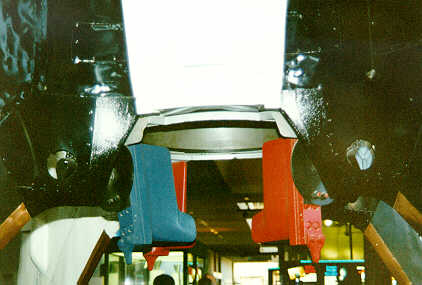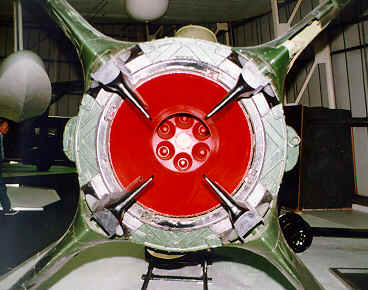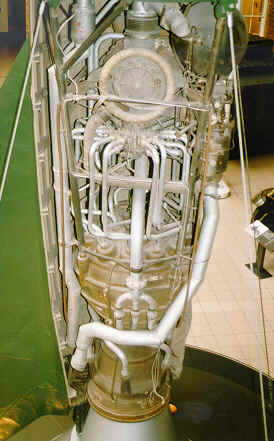V2 Missile in Detail
by Martin Waligorski
Photo: Martin Waligorski
Originally intended for use by the army to attack battlefield rear areas beyond the range of conventional artillery, the V2 (Vergeltungswaffe Zwei or Revenge Weapon Two) was the fourth weapon in a German Army research program known as Aggregat, which had been initiated under the technical direction of 24-year old Wernher Von Braun in 1932. The system was thus also known as the A-4. By 1942, the programme had been given top priority, and the first successful test took place on October 3, 1942. A meeting with Hitler in July 1943 allowed Von Braun to convince the Fuhrer of the potential of the weapon, who ordered it into mass production as quickly as possible.
The V2 stood over 14 m (46 ft) tall and had a diameter of 168 cm (5 ft 6in). Launch weight was 12,873 kg (28,380 lb), including a 998 kg (2,201 lb) warhead containing 730 kg (1,620 lb) of high explosive. Propellant was a noxious mixture of liquid oxygen and a 75%-25% ethyl alcohol-water mixture. The lift-off thrust was some 25,000 kg (55,116 lb), giving the V2 a velocity of about 1,585 m/sec (5,200 ft/sec) and a maximum range of between 306 and 322 km (190 and 200 miles). Guidance was by a primitive three-axis gyropilot acting on steerable exhaust vanes and aerodynamic rudders, which gave the missile a Circular Error Probable (CEP: the diameter of a circle within which half the missiles would land) of 17 km (11 miles).
Operation Paperclip conducted at the war’s end brought von Braun, many of his coworkers, and a great deal of German rocket hardware and documentation to the United States, von Braun headed the effort to build the giant Saturn V rocket used to launch the Apollo missions to the Moon .
V2 is an interesting modelling subject, being available as plastic kits in popular scales. 1/72 model has been recently released by Czech manufacturer Condor, and 1/35 model is marketed by DML.
The pictures below have been taken at three different locations. The National Air And Space Museum, Washington D.C. has a V2 carrying the black-and-white paint scheme typical for the 1943 tests at Peenemunde. Two British museums, the RAF Museum in Hendon and Imperial War Museum in London, also have these powerful rockets on display, both painted in what is supposed to be a field green camouflage. I can’t comment on accuracy on these paint schemes.
V2 in Detail
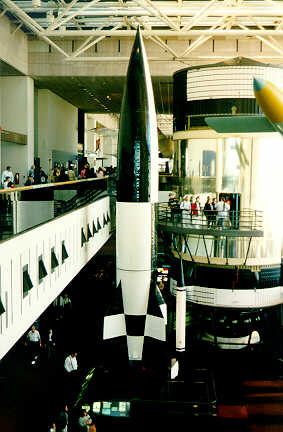 General view of the NASM example. Museums’ visitors lend scale to the 46ft tall rocket.
General view of the NASM example. Museums’ visitors lend scale to the 46ft tall rocket.
Top of the fuselage. Note formidable riveting.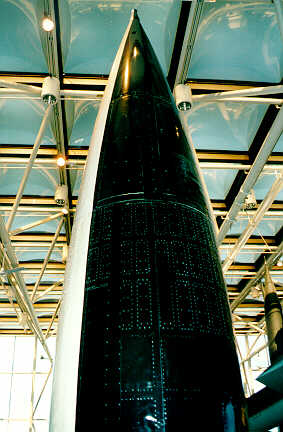
The bottom part of the rocket. The fins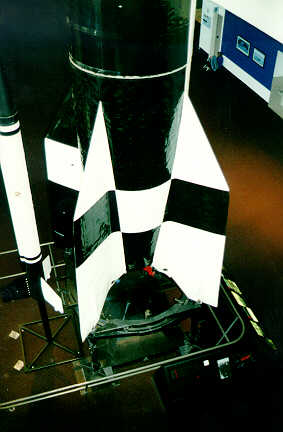 had aerodynamic control surfaces used during middle stage of flight.
had aerodynamic control surfaces used during middle stage of flight.
Details of the launch pad. This is a 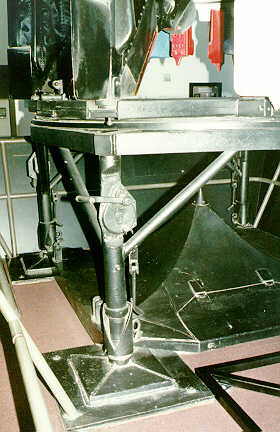 ”portable” launch pad used with V2 operationally. The pyramid in the middle is a blast deflector.
”portable” launch pad used with V2 operationally. The pyramid in the middle is a blast deflector.
Blast tube outlet. During the initial phase of flight the rocket was controlled by means of these four (colorful) thrust-vectoring flaps. These were made of pressurised graphite because of it’s heat resistant qualities.
A peek into the blast tube at Hendon’s missile. The thrust-vectoring flaps are colored graphite black here, which is believed to be closer to their original colour.
The rocket at the IWM has it’s engine installation revealed. The combustion chamber and the blast tube can be seen in the bottom. The fuel was lead into the chamber through a multitude of pipes. The round object at the top of the photo is a fuel pump..
This article was originally published in IPMS Stockholm Magazine in December 1997.
